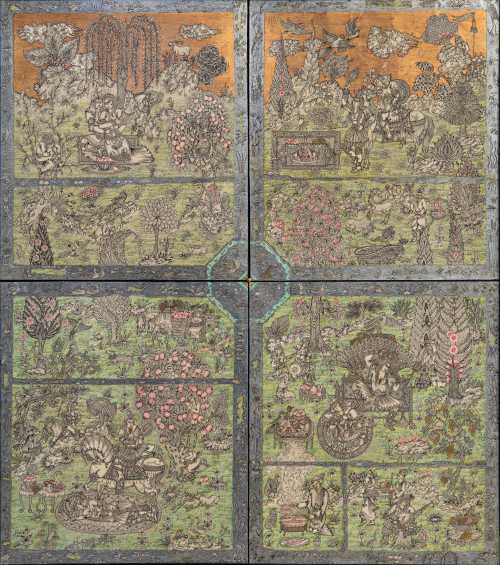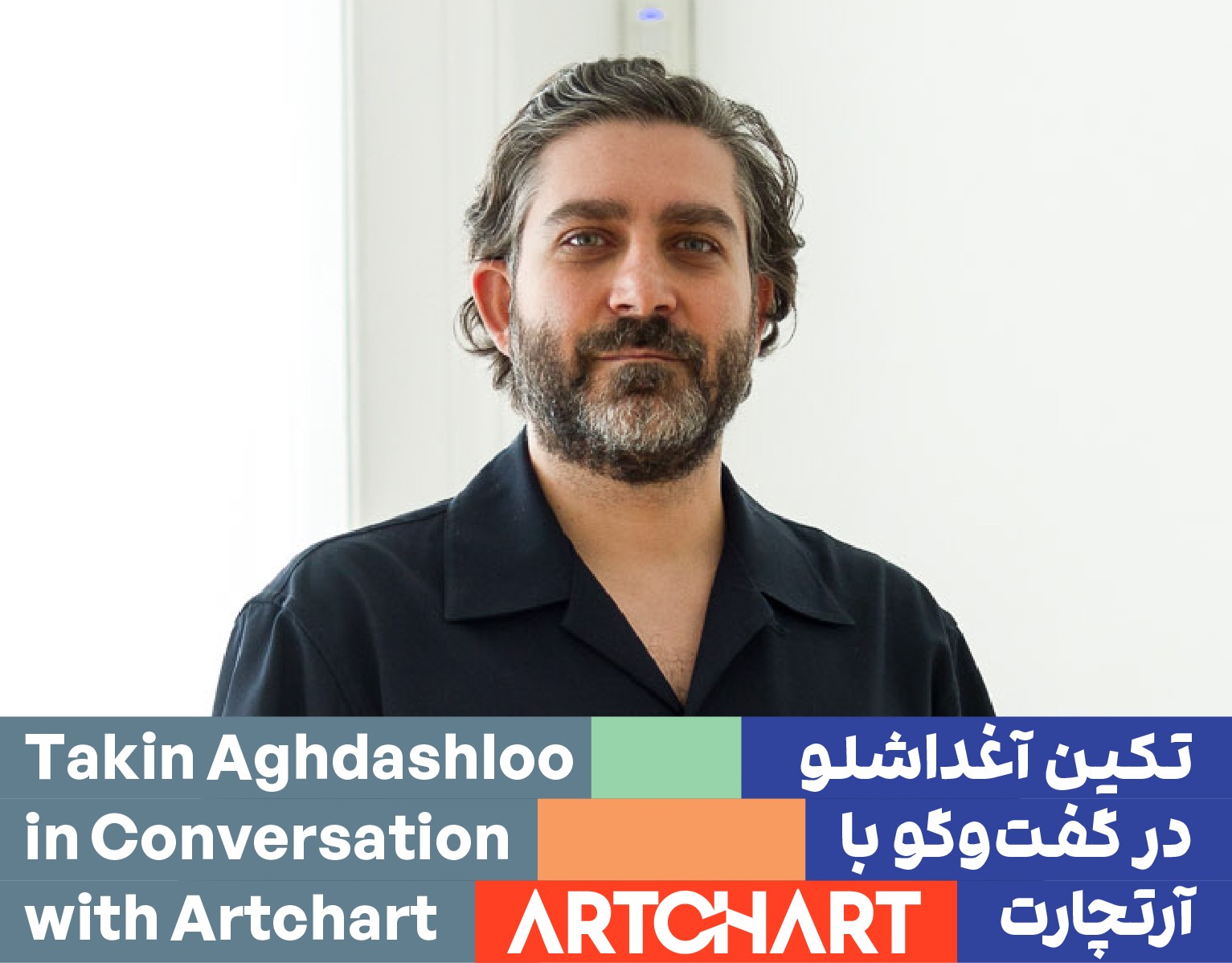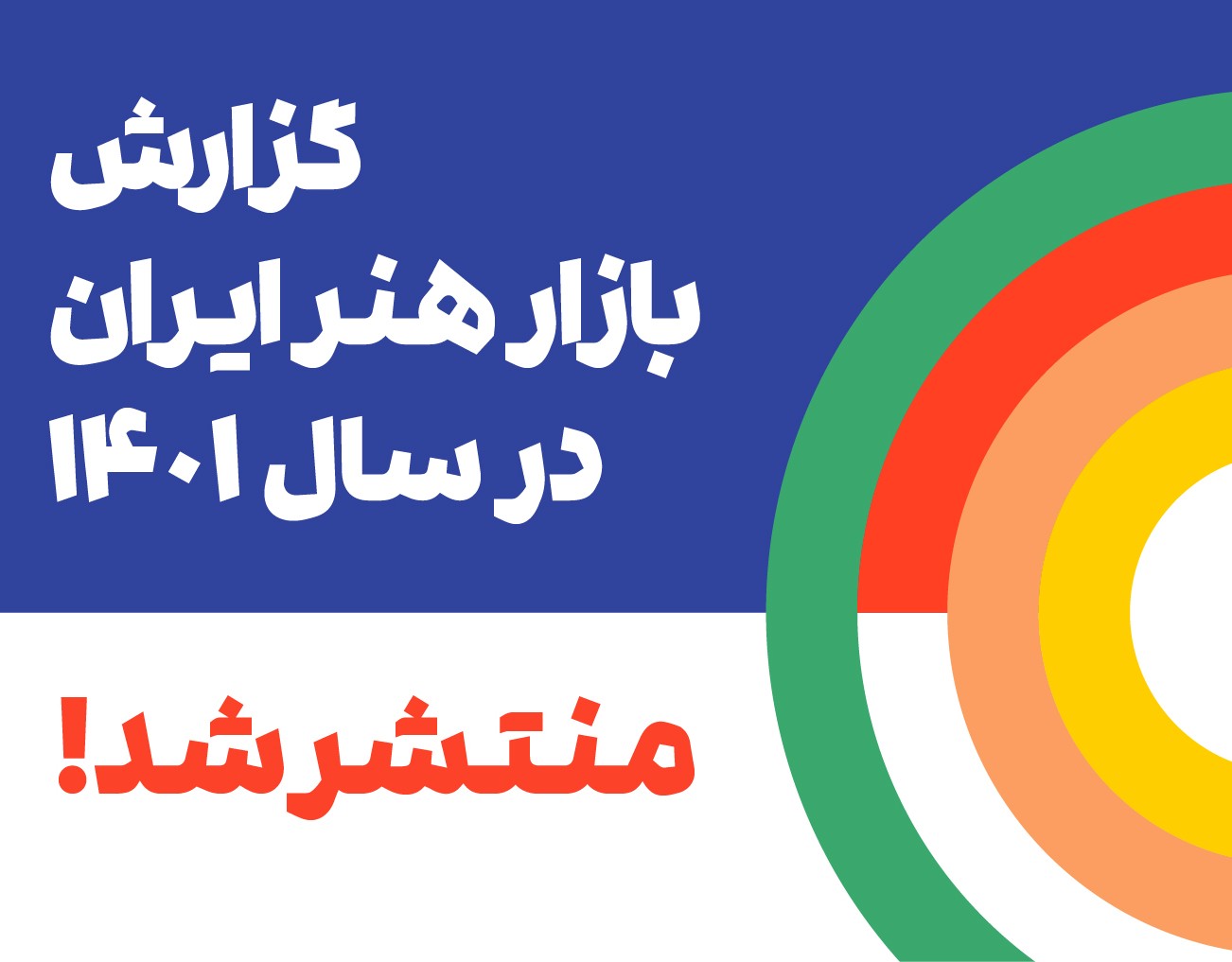About Aliakbar Sadeghi
Aliakbar Sadeghi was born in 1937 in Tehran. He showed his interest in painting since he was 5 years old, and then started painting in a more serious way at Jam High School. In 1958, he entered the Faculty of Fine Arts at Tehran University.
During high school, Sadeghi learned watercolor painting under the supervision of Avak Hiraptian. During this period, in addition to painting, he was also active in the field of painting stage sets and grim for school plays, and during his university years, he was able to invent a new style of vitrai painting with an Iranian atmosphere.
Sadeghi started his career as a professional painter very soon; He seriously established himself as a professional artist by painting movie posters, movie placards and advertising works. In the 70s, he collaborated with the Institute for the Intellectual Development of Children and Young Adults, which resulted in the production of several short animations; Aliakbar Sadeghi, in the continuation of his professional activity, also tried gallery management and was in charge of the Green Gallery in Tehran for a while. He also has experiences in areas such as design and packaging and book cover design.
He has received more than 15 international awards for animation and 4 international awards for book illustration. The first prize of book illustrators of Asia in 1978 for the book "Worship is not thought", the first prize of the Leipzig festival in 1980 for "the most beautiful book of victory" and the first prize of graphics for the best book illustration of Tehran in 1988, are among the most important awards that Ali Akbar Sadeghi has received. He has participated in many domestic and foreign exhibitions and has been able to publish 7 books of his collection of writings.
Aliakbar Sadeghi is considered a prominent figure in Iranian art due to his diverse experience in different artistic techniques. He has experimented with many artistic mediums from vitrai and watercolor to animation and printmaking. Most of Sadeghi's works have a surreal atmosphere with humor. In fact, it can be said that his style of work is a type of Iranian surrealism, which is based on the traditional and coffeehouse painting style. In addition, various references to Iranian stories and legends such as the Shahnameh are also evident in these works. In many of Sadeghi's first experiences, the presence of one or more warriors wearing the costumes of ancient Iranian warriors is clearly evident. Some of these fighters have the face of Aliakbar Sadeghi himself.
He says: "Legends have always been new to me. At first glance, they might consider me as an illustrator of legends, but this is not the whole story. I have used heroes and legends as sample to talk about my own time. Let me talk about the human being who still lives on the Earth as if nothing has changed, from the time of Cain who killed Abel unjustly with a broken stone, until today when that broken stone has become the arsenal of fighting and regrets that the oppressor man still punishes his innocent brother."
The Most Expensive Artwork
At Auctions
First Attendance
23 October 2008
# Attendance
10
# Artworks
10
Average Realized Price
37,521 USD
Average Min Estimate
21,217 USD
Average Max Estimate
30,278 USD
Sell-through Rate
77.778%
Average Growth of Artwork Worth
-4.371%
Timeline
Arab, Iranian & Turkish Art / Modern & Contemporary Middle Eastern Art | N°22 auction
15 December
Artibition Auction - October 2025 auction
7 October
Charsoo exhibition
5 September
Shadow exhibition
18 April
Maydan: A Living Agora exhibition
14 April
Fragments of Persian Modernity: Selected pieces from Iranian Modern and Contemporary Art exhibition
13 April
From Paper to Canvas exhibition
7 March
Nowruznegar 2 exhibition
7 March
Heart-to-Heart Talk exhibition
21 February
The 13th Art Expo of Several Generations of Iranian Contemporary Artists exhibition
7 February
A Tale of Two Cities exhibition
31 January
Akbar exhibition
31 January
Beyond Imagination exhibition
13 December
… And Poetry Will No Longer Serve exhibition
15 November
Timeless Creation exhibition
25 October
Landscapes of Mind exhibition
13 September
Gargas exhibition
23 August
"Bitter, Sweet, Burden" Iranian Perspective, Three Views exhibition
9 August
Darrous, 34 exhibition
2 August
Contemporary Art Collector exhibition
28 June
Nine Works of Iranian Modern Art exhibition
29 May
A Collection exhibition
10 May
10s of Artworks, 10s of Millions exhibition
8 March
Art Advisory exhibition
8 March
A Glance at Sketching exhibition
8 March
New Year/ New Vision exhibition
23 February
The Artwork of Legendary Artists exhibition
9 February
In Water Color exhibition
2 February
Display of Sculptures exhibition
2 February
Deev exhibition
1 December
Event: Iranian Contemporary Art and Shifting Realities exhibition
20 October
A Selection of 70 Years of Iranian Sculpture exhibition
4 August
The VenoArt National Loving Day auction
11 June
Root exhibition
9 June
Prospect exhibition
12 May
The Flor's Scent And Bird's Song exhibition
5 May
Realism exhibition
13 April
A Nostalgic Glimpse exhibition
26 August
Printmaking Group Exhibition exhibition
19 August
Modern Collector exhibition
24 June
Mad exhibition
24 June
Resize exhibition
13 May
Manufact exhibition
25 March
Soft Edge of the Blade exhibition
10 February
Mirror reflections exhibition
19 January
The Mana Jalalian Collection: A Rare Collection of Iranian Modern Art exhibition
15 November
now... exhibition
10 September
No.9 auction
3 September
The Collection of Liam Gallery exhibition
20 May
No.6 auction
16 October
Archive exhibition
21 August
One by One exhibition
3 July
Shabtab 7 exhibition
14 February
5th Collector exhibition
24 January
Manifestation Frame exhibition
28 September
Aliakbar Sadeghi exhibition
5 July
The 9th Tehran- Classic and Modern Iranian Art auction
29 June
Aliakbar Sadeghi Retrospective exhibition
28 January
"Still Life" Amordad Annual exhibition
4 August
پنجمین دوره حراج تهران auction
27 May
چهارمین دوره حراج تهران auction
29 May
Modern & Contemporary Arab, Iranian, Indian & Pakistani Art auction
24 November
Modern and Contemporary Arab and Iranian Art auction
23 October
Articles
Takin Aghdashloo Discusses Why Galleries Prefer London in Exclusive Artchart Interview 18 June 2024
Takin Aghdashloo, the curator of the exhibition "Nine Works from Iranian Modern Art,” elaborated on the details of this exhibition and curatorship matters in a conversation with Artchart. The exhibition took place from the 9th to the 13th of Khordad (May 29th to June 2nd) at the temporary space of Bavan Gallery in Cromwell Place, London. Featuring works by nine artists including Ayd...
Iranian Art Market Report for the Year 1401 SH 15 May 2023
When the Art Hall team was looking for the Iranian artworks' sales records for art appraisal, felt the void of an authoritative art reference. That's why Artchart was born in 2019. The purpose of launching Artchart was to create a database of the Iranian art market that can be used as a reference for a wide range of people, from artists to art collectors. Now Artchart has collected...


